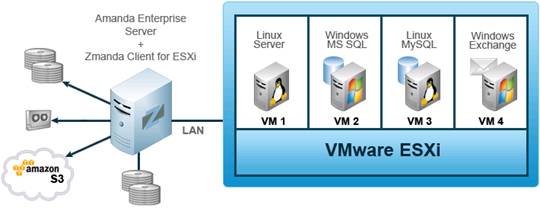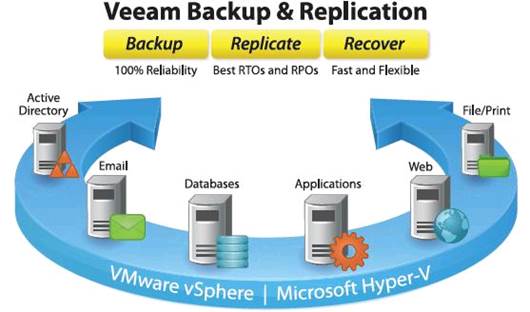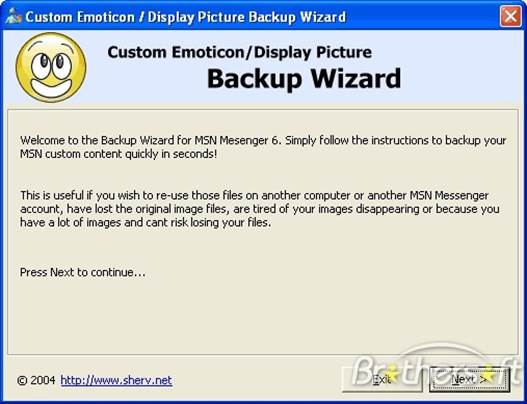Every company understands how important it
is to back up mission-critical data or even archive emails for future
reference. Backups are not only crucial for disaster recovery purposes, but
also for the long-term business continuity requirements of your company. With
the recent growth in virtualization as a way to maximize resources and
implement consolidation measures, companies will need to change the way they
think about backups. Now, more than ever, it is necessary to consider your
virtualized assets when deciding what to back up and how.
"The big thing that's changed relatively
recently is the criticality of what we're virtualizing," says Dave
Russell, research vice president at Gartner (www.gartner.com). "It's
really the importance of the payload of the data. A few years ago, it might
well have been test and development data that was being virtualized, but now
it's the production, mission critical workload; the things that we normally
would've protected in the past on physical machines."

Virtual
machine
For that reason, it's important to come up
with a VM (virtual machine) backup policy that is equal to your policy for
traditional data backups. You need to prioritize virtualized data and applications
just as you would data stored in a more physical environment or else you may
not be able to fully restore your critical systems in the event of a temporary
outage or widespread failure. We'll discuss a few of the best practices you can
follow when backing up your VMs.
Understand your environment & backup
needs
The important thing to remember about
virtual machine backup is that it isn't exactly the same as traditional backup
environments and that "doing business as usual from a backup perspective
won't typically work effectively in a virtualized environment," says
Russell. He explains that one of the biggest problems facing companies today is
the sheer amount of solutions on the market that are specifically built for
smaller implementations. For instance, you may start with a small pilot
project and your "virtualization administrator can download a tool and
feel very confident it's going to work," he says, but once you start to
deploy 300 or 500 virtual machines at the same time and reach critical mass,
"the cracks will start to show."

Veeam
Backup & Replication
Russell also points out that traditional
backup is a resource-intensive process that can fill up your input and output
streams as can other resources such as CPU and memory. Because virtualization
is all about maximizing efficiency and putting numerous virtual machines on
one physical server, it can lead to overloading your equipment. If you were to
implement 20 VMs on one physical machine, stack or increase the density of the
VM images, and then try to back it up with 10% of your resources, you would be
"oversubscribed by 200%," says Russell. You need to make sure you
have systems in place that can handle that amount of traffic and prevent
overtaxing your infrastructure.
Another key to successful VM backup is to
consider what you'll need to protect in the future. Rather than focusing on the
here and now, you'll need to project where you see your company a year or more
from now. One solution may work perfectly fine with five virtual machines, but
as you grow to 50, 500, or 1,000 machines, Russell says, you have to determine
who's going to be responsible for them. From there, you have to decide what
types of plug-ins, applications, and reporting tools, you'll need. That's where
doing your due diligence upfront will really pay off.
Choose the right solution
When choosing a virtual machine backup
solution, most any program will do in the short run, however it is important to
choose a solution that will meet your company's needs over a long period of
time. Russell compares the process of choosing a VM backup solution to buying a
car. "Any car can seem great one day," he says, "but what do you
really need from it over a long period of time?"
Some backup solutions are wizard like and
walk you through the selection process. Others, Russell says, "will
require encoding from the ground up." Your company's backup needs and
staff expertise will likely dictate whether you'll need a fully formed solution
or something more customizable.

Some
backup solutions are wizard like and walk you through the selection process
You'll also want to consider disaster
recovery and other factors when shopping for backup solutions. You may be able
to store VM images on a server, but will you be able to access them immediately
if your company experiences an outage? Russell recommends finding a solution
that lets you make the target location (where you're writing the virtual machine)
a cold standby server for your company to use in case of an outage. That means
that if there's a failure of any kind in your primary system, you essentially
have an up to date replacement waiting in the wings.
As with any technology investment, cost
will always be a factor. It's important to speak to vendors to figure out how
they charge for their services and whether they are compatible with your
internal systems. Russell says that some vendors offer a free backup capability
in their hypervisors, but just because they're free "doesn't mean that
they will meet your requirements." Some vendors also charge by the socket
or by the terabyte, so Russell says "you'll need to feel what type of
model is going to work for you at scale when you deploy it throughout the
environment." The more accurate you are with your projected number of
virtual machines, the better chance you have of not overpaying for a solution.
Make a backup schedule & stick to it
Once you have a backup solution in place,
you can't simply set it and forget it. You need a game plan that details the
systems you need to back up and how often. "The frequency really depends
on several things but most fundamentally the criticality of the data and the
change rate of the data," says Russell. "With some systems, the new
and modified data is pretty infrequent, so you could argue that you only need
to protect them once a week. Other systems are either so important or are being
added to and extended on such a regular basis that maybe snapshotting them once
an hour may be appropriate." You can save money as well as crucial
resources by backing up only what is necessary and following a strict policy.